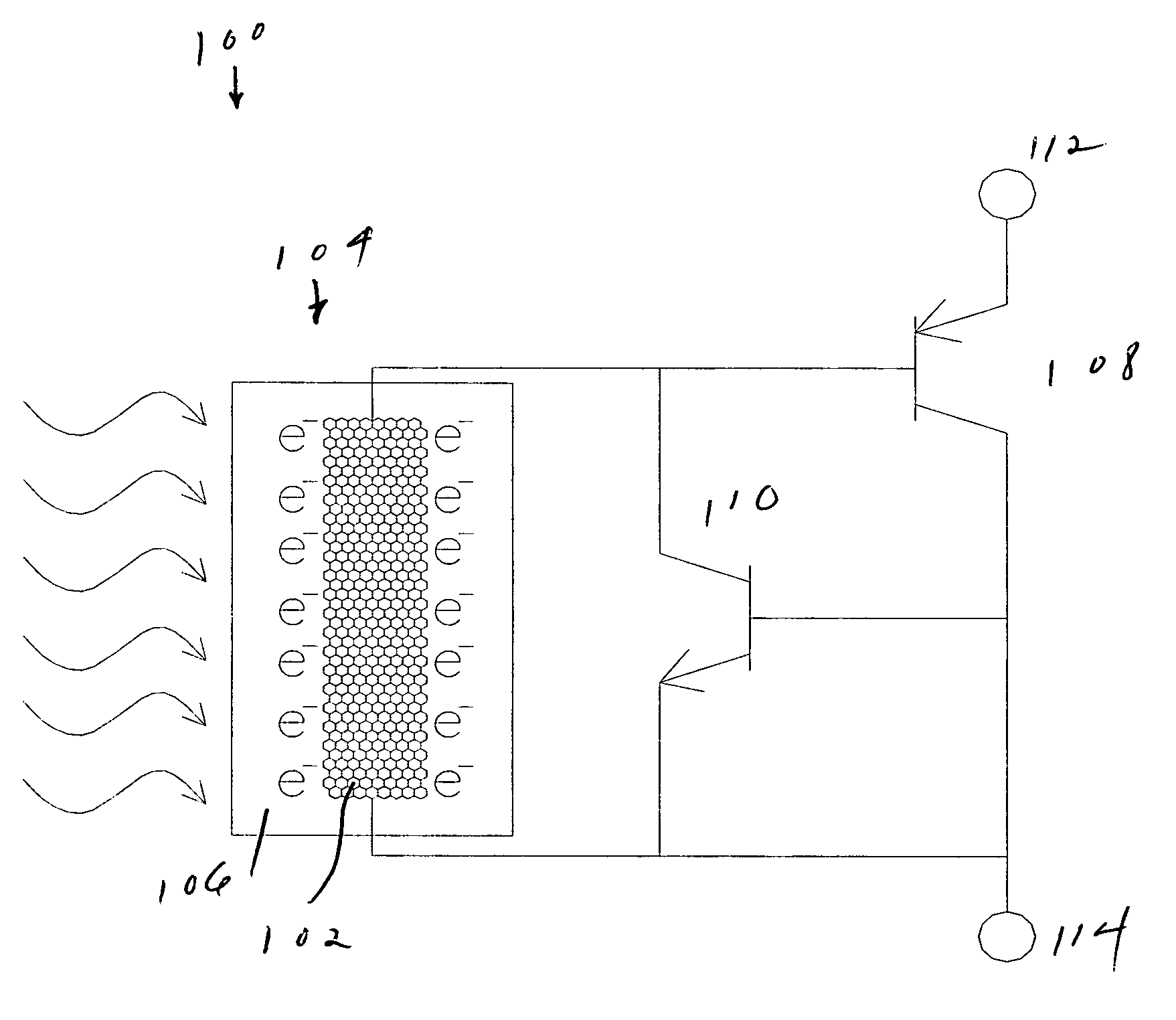Optically controlled electrical switching device based on wide bandgap semiconductors
a technology of wide bandgap semiconductors and switching devices, applied in electronic switching, pulse techniques, nanoinformatics, etc., can solve the problems of only being able to achieve substantial improvements, material quality and application markets have not been sufficiently mature until recently to justify significant manufacturing activities, and achieve greater power control efficiency. , the effect of high temperature operation
- Summary
- Abstract
- Description
- Claims
- Application Information
AI Technical Summary
Benefits of technology
Problems solved by technology
Method used
Image
Examples
Embodiment Construction
[0055] A preferred embodiment will be set forth in detail with respect to the drawings, in which like reference numerals refer to like elements throughout.
[0056]FIG. 1 shows a preferred embodiment of the switching device as 100. One or more semiconducting carbon nanotubes 102 form an optically gated FET 104 that in turn gates or switches on a power switching device. The power switching device has the topology of an SCR or IGBT, although other topologies can be implemented. The carbon nanotube FET 104 takes the place of the MOS FET in a customary IGBT arrangement. The carbon nanotube FET 104 is optically activated by light that is supplied by an optical fiber or any such optical means that creates charge near the nanotube surface when the light interacts with the photo-generating material 106 surrounding the carbon nanotube 102. This charge acting on the carbon nanotube surface is denoted by the e− symbols.
[0057] When the carbon nanotube 102 is made to conduct by the application of...
PUM
 Login to View More
Login to View More Abstract
Description
Claims
Application Information
 Login to View More
Login to View More - R&D
- Intellectual Property
- Life Sciences
- Materials
- Tech Scout
- Unparalleled Data Quality
- Higher Quality Content
- 60% Fewer Hallucinations
Browse by: Latest US Patents, China's latest patents, Technical Efficacy Thesaurus, Application Domain, Technology Topic, Popular Technical Reports.
© 2025 PatSnap. All rights reserved.Legal|Privacy policy|Modern Slavery Act Transparency Statement|Sitemap|About US| Contact US: help@patsnap.com



